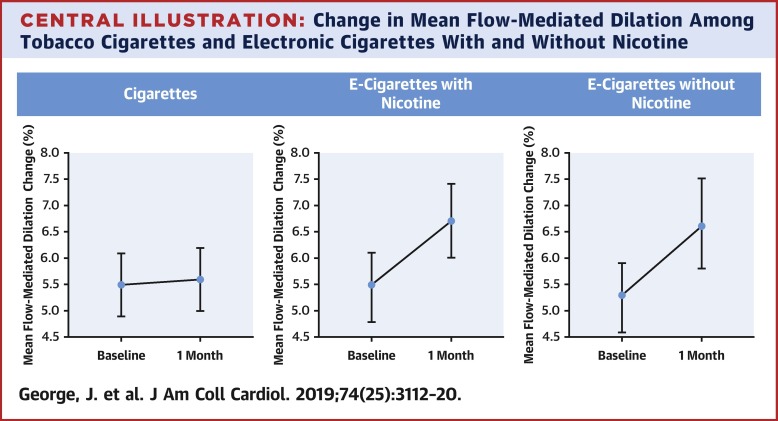
**New Research Suggests Smokers Who Completely Transition to E-Cigarettes Experience Enhanced Breathing, While Dual Usage Exacerbates Respiratory Problems**
A thorough study conducted in the U.S. indicates that smokers who make a full switch to e-cigarettes experience marked improvements in their respiratory health, particularly in symptoms like coughing and wheezing. In contrast, individuals engaging in both traditional smoking and vaping—referred to as “dual use”—do not witness these benefits, with many suffering from intensified respiratory complications.
This six-year investigation, published in *Nicotine & Tobacco Research* on November 12, 2024, monitored over 5,000 adults who initially reported both smoking and experiencing respiratory issues. The results are likely to influence public health guidelines for smokers contemplating e-cigarettes as a means to quit or reduce their smoking habits.
### 1. A Synopsis of The Study
The research analyzed data from the ongoing Population Assessment of Tobacco and Health (PATH) study, a national survey supervised by the National Institutes of Health from 2013 to 2019. Researchers from Oxford University Press classified over 5,000 participants into four categories:
1. Individuals who completely quit nicotine.
2. Those who transitioned entirely to e-cigarettes.
3. Smokers of conventional cigarettes only.
4. “Dual users” who both smoked traditional cigarettes and vaped concurrently.
Each participant’s respiratory conditions—such as coughing and wheezing—were tracked throughout the six-year period.
### 2. Notable Improvement with Complete Transition
Among those who reported a cough at the beginning of the study, 65% noted their symptoms vanished over time. Likewise, 53% of participants initially experiencing wheezing reported a decrease in these symptoms.
The group showing the most substantial improvements in respiratory health comprised individuals who quit all nicotine. However, researchers also identified significant enhancements in wheezing among participants who completely transitioned to e-cigarettes, even if the same wasn’t true for coughing.
### 3. The “Dual Use” Challenge
The most alarming discovery from the study is the negative effects of dual use—maintaining a practice of smoking traditional tobacco products while simultaneously using e-cigarettes. Participants attempting to “reduce” their regular cigarette intake by integrating vaping into their regimen did not benefit in respiratory health as those who either quit or fully switched to vaping.
In fact, dual users exhibited poorer outcomes compared to ongoing smokers, with a 14% lower rate of cough resolution and a 15% lesser improvement in wheezing. Researchers were taken aback by the health deterioration occurring despite some participants reducing their overall consumption of cigarettes.
### 4. Implications for Public Health
For smokers contemplating nicotine alternatives for health improvement, this study presents an important takeaway: combining cigarette use with e-cigarettes may not only fail to improve respiratory health but could actively worsen symptoms. For those aiming to enhance their health, the findings suggest that complete cessation—either through abstaining from nicotine entirely or switching fully to vaping—is the most effective path.
These results challenge the prevalent belief that “cutting back” on smoking by including vaping could yield health advantages. Instead, public health advocates might emphasize that individuals either cease smoking altogether or fully transition to e-cigarettes if they are not yet ready to abandon nicotine.
### 5. Responsible Messaging for Smokers
Dr. Anastasia Holtz, the lead researcher at Oxford University Press, has cautioned that dual use might pose greater risks than often acknowledged. “Our collected data suggests that seeking a compromise—where smokers continue with some conventional cigarettes while exploring e-cigarette options—does not produce the anticipated health improvements; in fact, it appears to worsen the situation,” Dr. Holtz remarked in a post-study interview.
“This clearly indicates that public messaging needs to convey a more refined understanding of nicotine and tobacco harm reduction. The safest route for smokers is evident: either completely quit nicotine or transition entirely to e-cigarettes.”
### 6. Real-World Consequences
As the popularity of e-cigarettes rises and smoking rates drop, this study underscores the pressing need for health strategies focused on minimizing tobacco-related harm among adults and adolescents. The United States has experienced swift shifts in tobacco usage trends, and while vaping is typically seen as safer than combustible cigarettes, the concerns surrounding dual use are becoming increasingly critical for public health organizations.
While some healthcare professionals have promoted e-cigarettes as a tool for harm reduction, this study underscores the intricate nature of their effectiveness in smoking cessation. Total cessation remains the ideal standard for respiratory wellness; however, for those unable to quit nicotine, a complete transition to vaping may provide some health benefits—assuming they entirely eliminate traditional smoking.
### 7. Key Insights for Smokers and Healthcare Providers
Overall, the study encourages a deeper examination of nicotine cessation methods. Smokers should be distinctly aware that engaging in dual use may negate the health benefits they associate